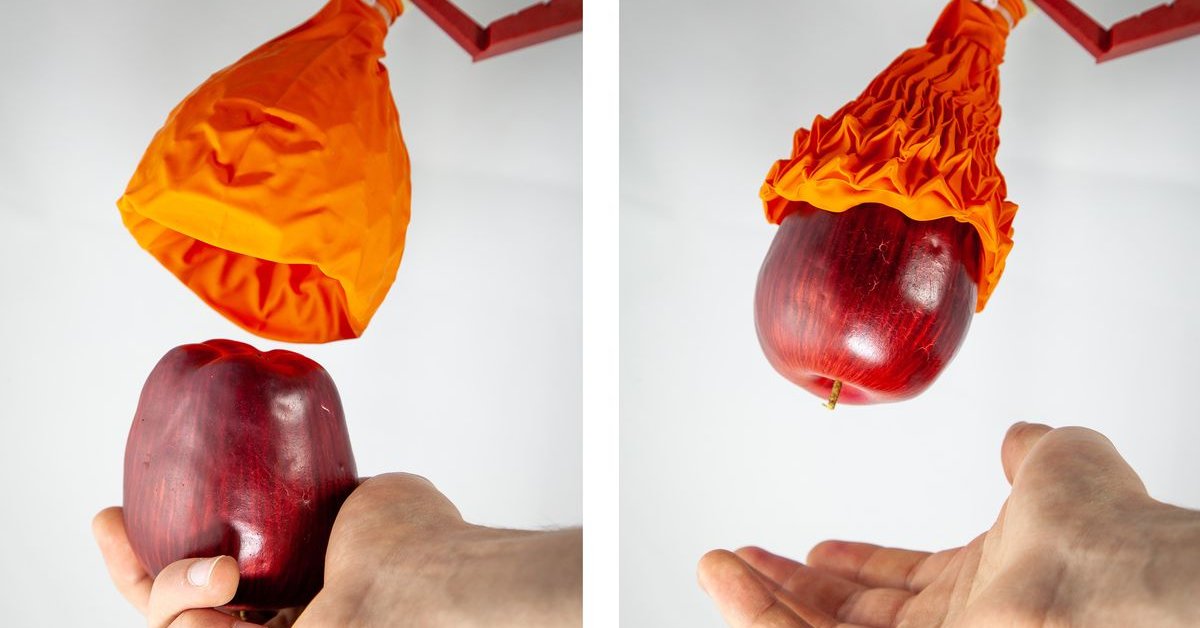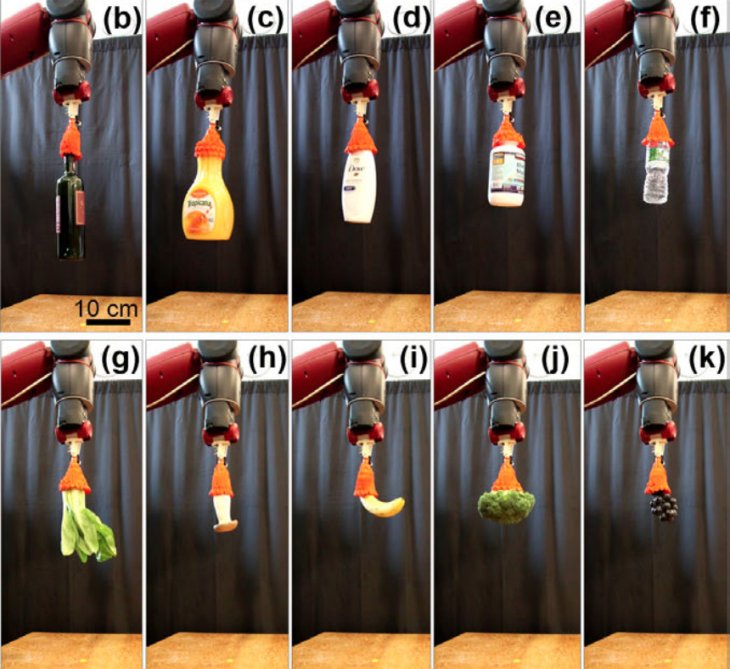Delicate-Looking Robot Gripper Can Lift 100 Times Its Weight
Harin - Mar 15, 2019

This robot gripper looks like a wilted flower, but it can lift 100 times its own weight, which is perfect for packing groceries.
- This Robotic Gripper Wraps Around Objects Like An Elephant Trunk
- These Light-Up Face Masks Can Detect Coronavirus Cases
- How To Hack Others' Dreams? MIT Scientists Got The Answer
According to professor Daniela Rus at MIT’s CSAIL (Computer Science and Artificial Intelligence Laboratory), people often imagine a robot with a human shape or some kind of industrial robot arm. In an interview with The Verge, she says she would like to see something different. What she and her team created, a robot gripper is a perfect example. The robot is designed to grab and pick up objects. But what is special about this robot is its unconventional looks.
Visually, it looks more like a deflated balloon or a rubber tulip than a robot hand.
However, this unique look actually makes to gripper potentially really useful. There is a starfish-shaped origami skeleton located underneath the robot’s rubber skin. It opens and closes just like a flower when gas moves in and out of the device’s airtight enclosure.
With this special design, the device is able to pick up fragile objects without breaking them while still keeping a strong grip to lift things that are 100 times heavier than its own weight.
Rus says:

Soft robot grippers are not something new. Over the past ten years, the field has witnessed engineers working to make use of soft machines of different shapes and sizes. One example of the use of this kind of robot is in the logistics field: picking up items in factories and warehouses.
This is due to the incapable of traditional robot grippers to handle items with irregular shapes or delicate ones.

The past few years have experienced a boom in this technology. Besides CSAIL, commercial companies such as RightHand Robotics have also invested in this field, developing from beanbag-like grippers, inflatable robot hands to octopus-tentacles-shaped modules.
However, Rus says her robot gripper is the best version. The tulip shape allows it to approach objects from different angles, compared with a hand gripper, which often comes from the side.
Its origami skeleton, developed in 2017, makes it strong and flexible.
Rus also explains why these kinds of devices have been used more widely. She says that is because “innovations coming out of the lab” is still far ahead of commercial solutions.
Another reason might probably be companies don’t want to replace their expensive equipment with something new.
But there is no doubt that the soft robotics field is going to have a bright future ahead. Rus says:

Featured Stories

Features - Jul 01, 2025
What Are The Fastest Passenger Vehicles Ever Created?

Features - Jun 25, 2025
Japan Hydrogen Breakthrough: Scientists Crack the Clean Energy Code with...

ICT News - Jun 25, 2025
AI Intimidation Tactics: CEOs Turn Flawed Technology Into Employee Fear Machine

Review - Jun 25, 2025
Windows 11 Problems: Is Microsoft's "Best" OS Actually Getting Worse?

Features - Jun 22, 2025
Telegram Founder Pavel Durov Plans to Split $14 Billion Fortune Among 106 Children

ICT News - Jun 22, 2025
Neuralink Telepathy Chip Enables Quadriplegic Rob Greiner to Control Games with...

Features - Jun 21, 2025
This Over $100 Bottle Has Nothing But Fresh Air Inside

Features - Jun 18, 2025
Best Mobile VPN Apps for Gaming 2025: Complete Guide

Features - Jun 18, 2025
A Math Formula Tells Us How Long Everything Will Live

Features - Jun 16, 2025
Comments
Sort by Newest | Popular